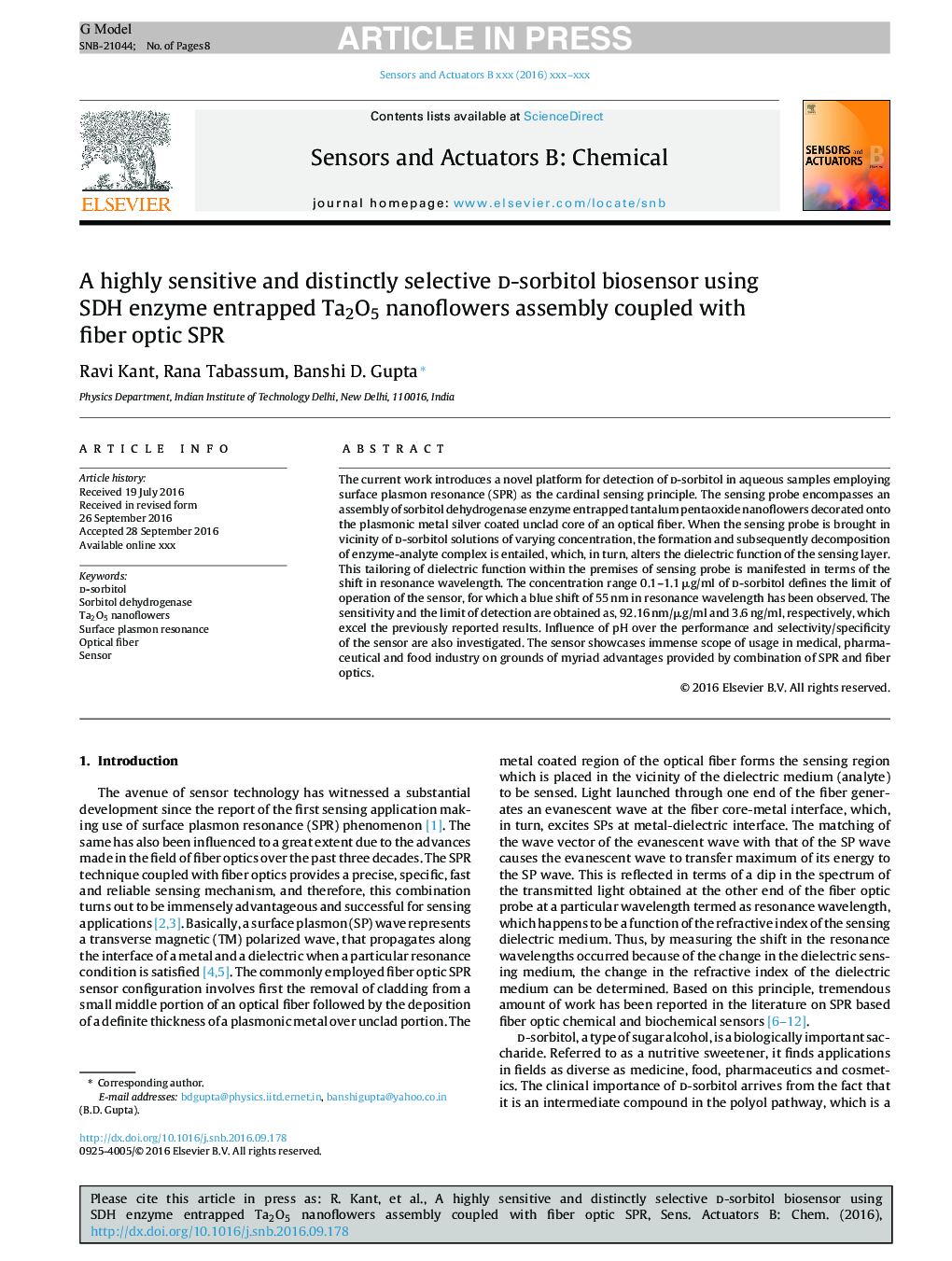| Article ID | Journal | Published Year | Pages | File Type |
|---|---|---|---|---|
| 5009748 | Sensors and Actuators B: Chemical | 2017 | 8 Pages |
Abstract
The current work introduces a novel platform for detection of d-sorbitol in aqueous samples employing surface plasmon resonance (SPR) as the cardinal sensing principle. The sensing probe encompasses an assembly of sorbitol dehydrogenase enzyme entrapped tantalum pentaoxide nanoflowers decorated onto the plasmonic metal silver coated unclad core of an optical fiber. When the sensing probe is brought in vicinity of d-sorbitol solutions of varying concentration, the formation and subsequently decomposition of enzyme-analyte complex is entailed, which, in turn, alters the dielectric function of the sensing layer. This tailoring of dielectric function within the premises of sensing probe is manifested in terms of the shift in resonance wavelength. The concentration range 0.1-1.1 μg/ml of d-sorbitol defines the limit of operation of the sensor, for which a blue shift of 55 nm in resonance wavelength has been observed. The sensitivity and the limit of detection are obtained as, 92.16 nm/μg/ml and 3.6 ng/ml, respectively, which excel the previously reported results. Influence of pH over the performance and selectivity/specificity of the sensor are also investigated. The sensor showcases immense scope of usage in medical, pharmaceutical and food industry on grounds of myriad advantages provided by combination of SPR and fiber optics.
Related Topics
Physical Sciences and Engineering
Chemistry
Analytical Chemistry
Authors
Ravi Kant, Rana Tabassum, Banshi D. Gupta,
